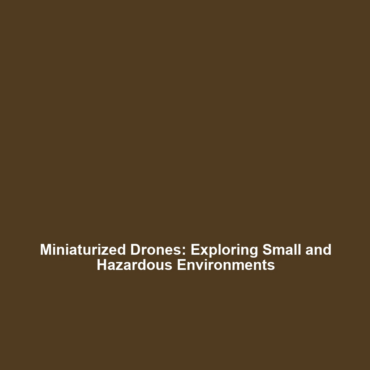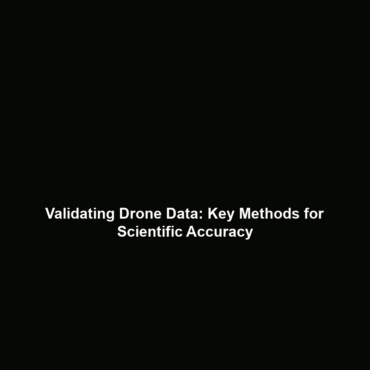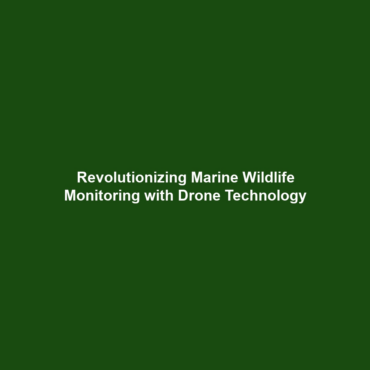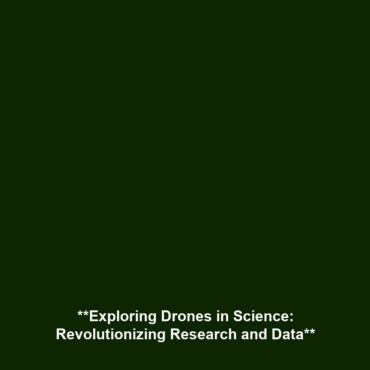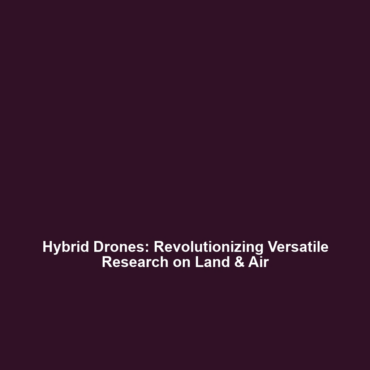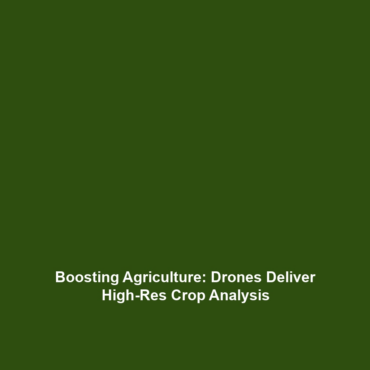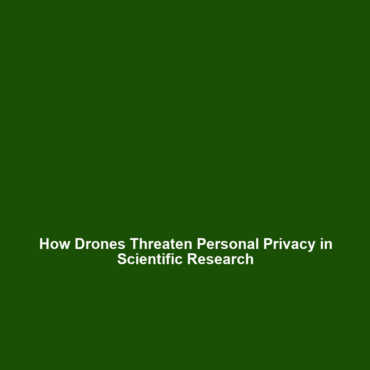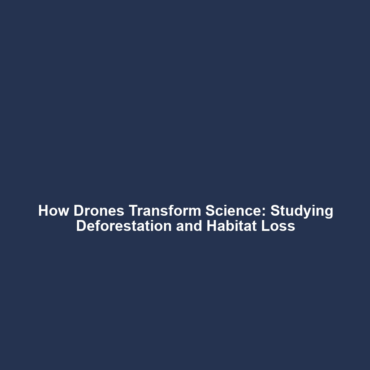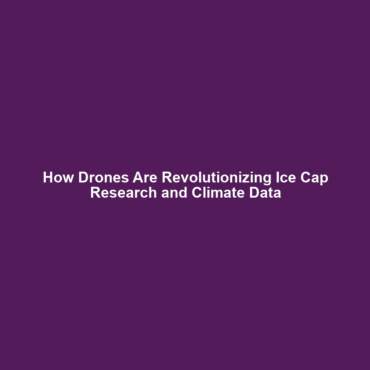Miniaturized Drones: Revolutionizing Science in Small or Dangerous Environments
Introduction
Miniaturized drones have emerged as transformative tools in various scientific fields, particularly in scenarios where conventional drones cannot operate effectively. These miniaturized drones capable of entering small or dangerous environments are essential in advancing research and operational capabilities within the broader category of drones in science. Offering unprecedented access to confined spaces, these compact aerial vehicles play a critical role in enhancing data collection, monitoring environmental changes, and ensuring safety in hazardous scenarios. As their technology progresses, the implications for both scientific innovation and practical application continue to expand.
Key Concepts
Design and Functionality
Miniaturized drones are designed with an emphasis on agility and maneuverability. Some of the core concepts include:
- Size and Weight: Their small size reduces the risk of injury during operation in crowded or sensitive areas.
- Advanced Sensors: Equipped with specialized sensors, these drones can collect data on temperature, humidity, gas concentrations, and more.
- Autonomous Navigation: Many models utilize AI algorithms for navigation in complex environments, minimizing manual control.
These principles enable miniaturized drones capable of entering small or dangerous environments to perform effectively within the category of drones in science, where precision and safety are paramount.
Applications and Real-World Uses
The applications of miniaturized drones extend across several fields, demonstrating their versatility and significance:
- Environmental Monitoring: Drones are used to assess ecosystems in cramped areas, such as caves or dense forests.
- Disaster Response: They can enter unstable buildings or dangerous zones post-disaster to locate survivors and assess structural integrity.
- Medical Delivery: Miniaturized drones deliver medical supplies in remote or inaccessible regions.
These examples illustrate how miniaturized drones capable of entering small or dangerous environments are effectively used in the field of drones in science.
Current Challenges
Despite their potential, several challenges remain in the study and application of miniaturized drones:
- Battery Life: Limited operational time is a critical constraint when navigating challenging environments.
- Signal Interference: Navigating tight spaces can result in communication challenges with control systems.
- Data Processing: The volume of data collected requires efficient processing methods for timely insights.
Addressing these challenges of miniaturized drones is essential for their effective deployment in drones in science.
Future Research and Innovations
Future developments in miniaturized drones focus on enhancing their capabilities and overcoming existing limitations. Upcoming innovations may include:
- Improved Battery Technology: The integration of advanced battery systems to extend flight duration.
- Enhanced AI Algorithms: Utilizing machine learning to improve autonomous navigation and data processing.
- Modular Designs: Drones that can be customized with interchangeable sensors for specific missions.
These breakthroughs are set to significantly impact the future of drones in science, making miniaturized drones capable of entering small or dangerous environments even more effective.
Conclusion
In summary, miniaturized drones are reshaping the landscape of scientific research by providing solutions to navigate small or dangerous environments. Their applications range from environmental monitoring to disaster response, highlighting their importance in drones in science. As technological advancements continue, these drones hold the promise of unlocking new frontiers in research and practical applications. For further exploration on the role of drones in various scientific endeavors, consider reading about applications of drones in science and future innovations in drone technology.
